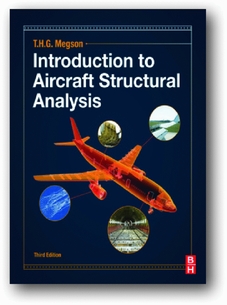
The analysis of thin-walled aircraft structures normally takes two forms. Firstly, the actual aircraft structure is idealised locally as a component such that an exact solution is then obtainable using classical applied mechanics. Secondly, the structure is approximated numerically (by finite elements) such that by using modern computer power, the model can be virtually exact and a numerical value given of the stresses etc.
The first approach has been used for decades, before the advent of computers, and this book has been a classic aid for such analysis, popular for students and practicing engineers. A list of the subjects of the chapter headings shows how many forms of idealised components can be analysed.
• Basic Elasticity
• Torsion of solid sections
• Thin plate theory
• Buckling of columns and plates
• Material properties
• Fatigue
• Bending, shear and torsion of open and closed thin-walled beams
• Stress analysis of wing spars, fuselages, and wings
• Laminated composite structures
Problems and solutions are given at the end of each chapter. These are helpful for students and reflect the fact that the author was an academic at Leeds University.
The reader will not find this book helpful for finite element methods, although, to be honest, there is a chapter explaining numerical methods with examples of triangular and quadrilateral elements. It shows its age by calling these ‘Matrix Methods’. No details are given why it is crucial to use the same numerical mapping for both shape and displacements. No discussion either of modern codes and their power to quickly create models, display results, use multi-layer sub-structuring, etc. It is clearly a dated book in this respect, and no surprise that all references to numerical analysis occur before 1967.


